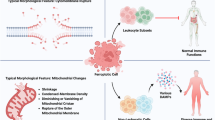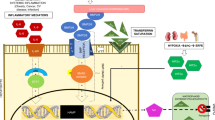Abstract
Ovarian cancer is a lethal malignancy that has not seen a major therapeutic advance in over 30 years. We demonstrate that ovarian cancer exhibits a targetable alteration in iron metabolism. Ferroportin (FPN), the iron efflux pump, is decreased, and transferrin receptor (TFR1), the iron importer, is increased in tumor tissue from patients with high grade but not low grade serous ovarian cancer. A similar profile of decreased FPN and increased TFR1 is observed in a genetic model of ovarian cancer tumor-initiating cells (TICs). The net result of these changes is an accumulation of excess intracellular iron and an augmented dependence on iron for proliferation. A forced reduction in intracellular iron reduces the proliferation of ovarian cancer TICs in vitro, and inhibits both tumor growth and intraperitoneal dissemination of tumor cells in vivo. Mechanistic studies demonstrate that iron increases metastatic spread by facilitating invasion through expression of matrix metalloproteases and synthesis of interleukin 6 (IL-6). We show that the iron dependence of ovarian cancer TICs renders them exquisitely sensitive in vivo to agents that induce iron-dependent cell death (ferroptosis) as well as iron chelators, and thus creates a metabolic vulnerability that can be exploited therapeutically.
This is a preview of subscription content, access via your institution
Access options
Subscribe to this journal
Receive 50 print issues and online access
$259.00 per year
only $5.18 per issue
Buy this article
- Purchase on Springer Link
- Instant access to full article PDF
Prices may be subject to local taxes which are calculated during checkout








Similar content being viewed by others
References
A snapshot of ovarian cancer. National Cancer Institute. Available from http://www.cancer.gov/research/progress/snapshots/ovarian (accessed 21 December 2015).
Vang R, Shih IeM, Kurman RJ . Ovarian low-grade and high-grade serous carcinoma: pathogenesis, clinicopathologic and molecular biologic features, and diagnostic problems. Adv Anat Pathol 2009; 16: 267–282.
Leong HS, Galletta L, Etemadmoghadam D, George J, Kobel M, Ramus SJ et al. Efficient molecular subtype classification of high-grade serous ovarian cancer. J Pathol 2015; 236: 272–277.
Tothill RW, Tinker AV, George J, Brown R, Fox SB, Lade S et al. Novel molecular subtypes of serous and endometrioid ovarian cancer linked to clinical outcome. Clin Cancer Res 2008; 14: 5198–5208.
Lengyel E . Ovarian cancer development and metastasis. Am J Pathol 2010; 177: 1053–1064.
Landen Jr CN, Goodman B, Katre AA, Steg AD, Nick AM, Stone RL et al. Targeting aldehyde dehydrogenase cancer stem cells in ovarian cancer. Mol Cancer Ther 2010; 9: 3186–3199.
Silva IA, Bai S, McLean K, Yang K, Griffith K, Thomas D et al. Aldehyde dehydrogenase in combination with CD133 defines angiogenic ovarian cancer stem cells that portend poor patient survival. Cancer Res 2011; 71: 3991–4001.
Karst AM, Drapkin R . Ovarian cancer pathogenesis: a model in evolution. J Oncol 2010; 2010: 932371.
Ng A, Barker N . Ovary and fimbrial stem cells: biology, niche and cancer origins. Nat Rev Mol Cell Biol 2015; 16: 625–638.
Yamamoto Y, Ning G, Howitt BE, Mehra K, Wu L, Wang X et al. In vitro and in vivo correlates of physiological and neoplastic human Fallopian tube stem cells. J Pathol 2016; 238: 519–530.
Torti SV, Torti FM . Iron and cancer: more ore to be mined. Nat Rev Cancer 2013; 13: 342–355.
Torti SV, Torti FM . Ironing out cancer. Cancer Res 2011; 71: 1511–1514.
Dolma S, Lessnick SL, Hahn WC, Stockwell BR . Identification of genotype-selective antitumor agents using synthetic lethal chemical screening in engineered human tumor cells. Cancer Cell 2003; 3: 285–296.
Li HX, Lu ZH, Shen K, Cheng WJ, Malpica A, Zhang J et al. Advances in serous tubal intraepithelial carcinoma: correlation with high grade serous carcinoma and ovarian carcinogenesis. Int J Clin Exp Pathol 2014; 7: 848–857.
Kurman RJ . Origin and molecular pathogenesis of ovarian high-grade serous carcinoma. Ann Oncol 2013; 24 (Suppl 10): x16–x21.
Dietl J . Revisiting the pathogenesis of ovarian cancer: the central role of the fallopian tube. Arch Gynecol Obstet 2014; 289: 241–246.
Wang W, Deng Z, Hatcher H, Miller LD, Di X, Tesfay L et al. IRP2 regulates breast tumor growth. Cancer Res 2014; 74: 497–507.
Gershenson DM . The life and times of low-grade serous carcinoma of the ovary. Am Soc Clin Oncol Educ Book 2013. e195–e199.
Torti FM, Torti SV . Regulation of ferritin genes and protein. Blood 2002; 99: 3505–3516.
Baba T, Convery PA, Matsumura N, Whitaker RS, Kondoh E, Perry T et al. Epigenetic regulation of CD133 and tumorigenicity of CD133+ ovarian cancer cells. Oncogene 2009; 28: 209–218.
Kurrey NK, Jalgaonkar SP, Joglekar AV, Ghanate AD, Chaskar PD, Doiphode RY et al. Snail and slug mediate radioresistance and chemoresistance by antagonizing p53-mediated apoptosis and acquiring a stem-like phenotype in ovarian cancer cells. Stem Cells 2009; 27: 2059–2068.
Ning G, Bijron JG, Yamamoto Y, Wang X, Howitt BE, Herfs M et al. The PAX2-null immunophenotype defines multiple lineages with common expression signatures in benign and neoplastic oviductal epithelium. J Pathol 2014; 234: 478–487.
Baker VV, Borst MP, Dixon D, Hatch KD, Shingleton HM, Miller D . c-myc amplification in ovarian cancer. Gynecol Oncol 1990; 38: 340–342.
Ahmed AA, Etemadmoghadam D, Temple J, Lynch AG, Riad M, Sharma R et al. Driver mutations in TP53 are ubiquitous in high grade serous carcinoma of the ovary. J Pathol 2010; 221: 49–56.
Manz DH, Blanchette N, Paul B, Torti FM, Torti SV . Iron and Cancer: recent insights. Ann NY Acad Sci 2016; 1368: 149–161.
Domcke S, Sinha R, Levine DA, Sander C, Schultz N . Evaluating cell lines as tumour models by comparison of genomic profiles. Nat commun 2013; 4: 2126.
Schimanski LM, Drakesmith H, Merryweather-Clarke AT, Viprakasit V, Edwards JP, Sweetland E et al. In vitro functional analysis of human ferroportin (FPN) and hemochromatosis-associated FPN mutations. Blood 2005; 105: 4096–4102.
Liu XB, Yang F, Haile DJ . Functional consequences of ferroportin 1 mutations. Blood cells mol dis 2005; 35: 33–46.
Bast Jr RC, Hennessy B, Mills GB . The biology of ovarian cancer: new opportunities for translation. Nat Rev Cancer 2009; 9: 415–428.
Coward J, Kulbe H, Chakravarty P, Leader D, Vassileva V . Leinster DA, et al. Interleukin-6 as a therapeutic target in human ovarian cancer. Clin Cancer Res 2011; 17: 6083–6096.
Dixon SJ, Lemberg KM, Lamprecht MR, Skouta R, Zaitsev EM, Gleason CE et al. Ferroptosis: an iron-dependent form of nonapoptotic cell death. Cell 2012; 149: 1060–1072.
Dixon SJ, Stockwell BR . The role of iron and reactive oxygen species in cell death. Nat Chem Biol 2014; 10: 9–17.
Karst AM, Levanon K, Drapkin R . Modeling high-grade serous ovarian carcinogenesis from the fallopian tube. Proc Natl Acad Sci USA 2011; 108: 7547–7552.
Miller LD, Coffman LG, Chou JW, Black MA, Bergh J, D'Agostino Jr R et al. An iron regulatory gene signature predicts outcome in breast cancer. Cancer Res 2011; 71: 6728–6737.
Pinnix ZK, Miller LD, Wang W, D'Agostino Jr R, Kute T, Willingham MC et al. Ferroportin and iron regulation in breast cancer progression and prognosis. Sci Transl Med 2010; 2: 43ra56.
Schonberg DL, Miller TE, Wu Q, Flavahan WA, Das NK, Hale JS et al. Preferential iron trafficking characterizes glioblastoma stem-like cells. Cancer Cell 2015; 28: 441–455.
Tesfay L, Clausen KA, Kim JW, Hegde P, Wang X, Miller LD et al. Hepcidin regulation in prostate and its disruption in prostate cancer. Cancer Res 2015; 75: 2254–2263.
Dijkgraaf EM, Welters MJ, Nortier JW, van der Burg SH, Kroep JR . Interleukin-6/interleukin-6 receptor pathway as a new therapy target in epithelial ovarian cancer. Curr Pharm Des 2012; 18: 3816–3827.
Zou M, Zhang X, Xu C . IL6-induced metastasis modulators p-STAT3, MMP-2 and MMP-9 are targets of 3,3'-diindolylmethane in ovarian cancer cells. Cell Oncol (Dordr) 2015.
Lui GY, Kovacevic Z, V Menezes S, Kalinowski DS, Merlot AM, Sahni S et al. Novel thiosemicarbazones regulate the signal transducer and activator of transcription 3 (STAT3) pathway: inhibition of constitutive and interleukin 6-induced activation by iron depletion. Mol Pharmacol 2015; 87: 543–560.
Dai J, Huang C, Wu J, Yang C, Frenkel K, Huang X . Iron-induced interleukin-6 gene expression: possible mediation through the extracellular signal-regulated kinase and p38 mitogen-activated protein kinase pathways. Toxicology 2004; 203: 199–209.
Reed JC, Pellecchia M . Ironing out cell death mechanisms. Cell 2012; 149: 963–965.
Yang WS, SriRamaratnam R, Welsch ME, Shimada K, Skouta R, Viswanathan VS et al. Regulation of ferroptotic cancer cell death by GPX4. Cell 2014; 156: 317–331.
Yang WS, Stockwell BR . Ferroptosis: death by lipid peroxidation. Trends Cell Biol 2015; 26: 165–176.
Shah MM, Landen CN . Ovarian cancer stem cells: are they real and why are they important? Gynecol Oncol 2014; 132: 483–489.
Deng Z, Wan M, Sui G . PIASy-mediated sumoylation of Yin Yang 1 depends on their interaction but not the RING finger. Mol cell biol 2007; 27: 3780–3792.
Ross SL, Tran L, Winters A, Lee KJ, Plewa C, Foltz I et al. Molecular mechanism of hepcidin-mediated ferroportin internalization requires ferroportin lysines, not tyrosines or JAK-STAT. Cell metab 2012; 15: 905–917.
Nguyen DH, Zhou T, Shu J, Mao J . Quantifying chromogen intensity in immunohistochemistry via reciprocal intensity. CancerInCytes 2013; 2: 1–3e.
Acknowledgements
Supported in part by NIH grants R01 CA188025 (SVT), R01 CA171101 (FMT), the Department of Defense (W81XWH-10-1-0289 to CC), and Scholar grants from the Cancer Prevention and Research Institute of Texas (CPRIT; to WX and FM). We thank Tara L Arvedson (Amgen, Thousand Oaks, CA) for a generous gift of anti-ferroportin antibody.
Author information
Authors and Affiliations
Corresponding author
Ethics declarations
Competing interests
The authors declare no conflict of interest.
Additional information
Supplementary Information accompanies this paper on the Oncogene website
Rights and permissions
About this article
Cite this article
Basuli, D., Tesfay, L., Deng, Z. et al. Iron addiction: a novel therapeutic target in ovarian cancer. Oncogene 36, 4089–4099 (2017). https://doi.org/10.1038/onc.2017.11
Received:
Revised:
Accepted:
Published:
Issue Date:
DOI: https://doi.org/10.1038/onc.2017.11
This article is cited by
-
A risk model based on 10 ferroptosis regulators and markers established by LASSO-regularized linear Cox regression has a good prognostic value for ovarian cancer patients
Diagnostic Pathology (2024)
-
The roles of autophagy, ferroptosis and pyroptosis in the anti-ovarian cancer mechanism of harmine and their crosstalk
Scientific Reports (2024)
-
Nrf2 suppresses erastin-induced ferroptosis through activating system Xc(-) in ovarian cancer
Molecular & Cellular Toxicology (2024)
-
ZIF-8 coated gold nanospheres: a multi-responsive drug delivery system promoting the killing effect of photothermal therapy against osteosarcoma cells
Nano Research (2024)
-
Interference with MTHFD2 induces ferroptosis in ovarian cancer cells through ERK signaling to suppress tumor malignant progression
Journal of Bioenergetics and Biomembranes (2024)



